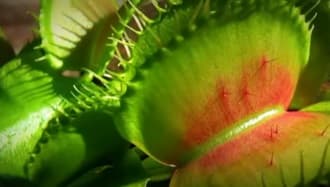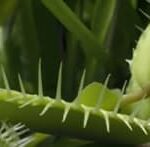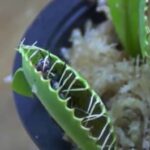As an Amazon Associate, this site earns commissions from qualifying purchases. For more details, click here.
Venus flytraps (Dionaea muscipula) captivate enthusiasts with their unique carnivorous nature and intricate trapping mechanisms. However, the allure of these fascinating plants has led to concerns regarding their conservation status and the legality of harvesting them from their native habitats. This article explores the legal status of Venus flytrap harvesting, relevant regulations, conservation efforts, and ethical considerations surrounding their collection.
Key Takeaways:
- Federal and state laws, including the Endangered Species Act govern the harvesting of Venus flytraps and protect them from habitat destruction and unauthorized collection
- Responsible harvesting practices, conservation awareness, and alternative options such as purchasing cultivated Venus flytraps promote sustainability
- Organizations, protected areas management, and community involvement play essential roles in conserving Venus flytraps and their habitats, ensuring their long-term survival.
Are Venus Flytraps Endangered?
Venus flytraps (Dionaea muscipula) and their cultivars are among the most iconic and intriguing plants in the world, known for their carnivorous nature and intricate trapping mechanisms. However, despite their captivating appeal, Venus flytraps face numerous threats in the wild, leading to their classification as a protected species.
Habitat Loss and Fragmentation
One of the primary reasons for protecting Venus flytraps is habitat loss and fragmentation caused by urbanization, agricultural development, and land conversion. As human activities encroach upon their natural habitats, Venus flytraps face increased competition for space and resources, leading to population declines and habitat degradation.
Poaching and Illegal Harvesting
Venus flytraps are highly sought after by collectors, enthusiasts, and commercial vendors due to their novelty and rarity. However, illegal poaching and unauthorized harvesting of Venus flytraps from the wild pose a significant threat to their survival. Rampant collection pressure can decimate local populations and disrupt ecosystem dynamics, leading to irreversible losses.

Vulnerability to Climate Change
Climate change exacerbates the threats faced by Venus flytraps by altering temperature and precipitation patterns, disrupting ecological relationships, and increasing the frequency and intensity of extreme weather events. Venus flytraps, adapted to specific habitat conditions, may struggle to cope with rapid environmental changes, making them more vulnerable to extinction.
Venus Flytrap Legal Protection
To address the conservation challenges faced by Venus flytraps, both federal and state governments have implemented various legal protections and regulations.
Endangered Species Act (ESA)
While Venus flytraps themselves are not listed as endangered or threatened under the ESA, their habitats often overlap with areas designated for the protection of other federally listed species. Destruction or disturbance of habitat that supports Venus flytraps may fall under ESA regulations if it impacts these listed species.
This includes regulations aimed at preserving critical habitat, preventing habitat degradation, and avoiding harm to endangered or threatened species that coexist with Venus flytraps in their native ecosystems.
State-Level Regulations
North Carolina and South Carolina, the primary range states for Venus flytraps, have enacted specific regulations to protect these plants from overharvesting and habitat destruction.
In North Carolina, the N.C. Plant Conservation Program oversees the conservation and management of Venus flytraps and other rare plant species. The state has laws and regulations in place that prohibit or tightly regulate the unauthorized harvesting, possession, and sale of wild Venus flytraps. These regulations aim to prevent the depletion of wild populations and ensure sustainable management of Venus flytrap habitats.
South Carolina also has regulations governing the collection and trade of Venus flytraps. The South Carolina Department of Natural Resources (SCDNR) regulates the harvesting and possession of Venus flytraps, with permits required for certain activities such as commercial harvesting or scientific research. These regulations help protect Venus flytraps from overexploitation and illegal trade while promoting responsible stewardship of their natural habitats.
Protected Areas and Reserves
Many public lands and conservation areas where Venus flytraps occur are designated as protected areas to safeguard their habitats and ensure their long-term survival.
These protected areas include state parks, national wildlife refuges, nature reserves, and other conservation lands managed by government agencies or nonprofit organizations.
Harvesting Venus flytraps from these protected areas without proper authorization is strictly prohibited, and violators may face legal penalties. These regulations help preserve the integrity of Venus flytrap habitats and provide refuge for wild populations to thrive free from human disturbance.
Ethical Considerations
Beyond legal regulations, ethical considerations play a crucial role in determining whether and how Venus flytraps should be harvested.
The harvesting of Venus flytraps (Dionaea muscipula) raises important ethical considerations, balancing the interests of plant enthusiasts with the conservation needs of this unique species. While the allure of these captivating plants is undeniable, ethical harvesting practices are essential to ensure the sustainability and long-term survival of wild populations.
Sustainable Harvesting Practices
Ethical harvesting of Venus flytraps involves adopting sustainable practices that prioritize the conservation of wild populations. Instead of indiscriminately collecting plants from the wild, individuals should seek out cultivated specimens from reputable nurseries or certified growers.
Cultivated Venus flytraps are readily available in the horticultural trade and are often propagated through sustainable methods such as tissue culture or seed propagation. By purchasing cultivated plants, enthusiasts can support ethical horticulture and reduce the pressure on wild populations.
Minimizing Impact on Wild Populations
Wild Venus flytrap populations are already facing numerous threats, including habitat loss, poaching, and climate change. Ethical considerations dictate that harvesting should not contribute to further declines in wild populations or exacerbate existing conservation challenges.
Harvesting Venus flytraps from the wild should be avoided unless authorized permits are obtained for scientific research or conservation purposes. Even then, strict guidelines should be followed to minimize disturbance and ensure sustainable management of wild populations.
Habitat Conservation and Restoration
Ethical considerations extend beyond harvesting practices to include broader efforts aimed at habitat conservation and restoration. Protecting the natural habitats of Venus flytraps is essential for their long-term survival and ecological integrity.
Conservation organizations, government agencies, and community stakeholders should collaborate to implement habitat conservation measures, including land protection, habitat restoration projects, and invasive species control. By safeguarding Venus flytrap habitats, we can ensure the continued existence of these plants in their native ecosystems.
Educational Outreach and Awareness
Raising awareness about the importance of Venus flytrap conservation and the ethical considerations surrounding their harvesting is crucial for promoting responsible stewardship.
Educational outreach programs, workshops, and public awareness campaigns can help inform enthusiasts and the general public about the ecological significance of Venus flytraps, the threats they face, and the ethical implications of harvesting from the wild.
Conservation Initiatives
Individuals passionate about Venus flytraps can contribute to conservation efforts by supporting organizations dedicated to their protection. Donations, volunteerism, and advocacy can help fund conservation projects, habitat restoration efforts, and scientific research aimed at understanding and conserving Venus flytrap populations.
Conservation Efforts
:Instead of harvesting Venus flytraps from the wild, individuals can support conservation initiatives by donating to organizations dedicated to protecting their habitats, participating in habitat restoration projects, or purchasing cultivated Venus flytraps from ethical suppliers.
The Venus Flytrap Foundation (VFF)
The VFF is a nonprofit organization committed to the conservation and preservation of Venus flytraps and their natural habitats. Founded by passionate individuals and experts in the field of botany and conservation biology, the VFF conducts research, habitat assessments, and conservation projects aimed at protecting Venus flytraps from threats such as habitat loss, poaching, and climate change.
In addition to research and conservation efforts, the VFF plays a crucial role in raising awareness about the ecological significance of Venus flytraps and promoting public education initiatives to foster a deeper understanding of these remarkable plants.
Through educational outreach programs, workshops, and community events, the VFF seeks to inspire conservation stewardship and encourage sustainable practices among individuals and communities.
Protected Areas Management
State and federal agencies responsible for managing protected areas where Venus flytraps occur play a vital role in conservation efforts. These agencies develop and implement strategies to conserve Venus flytrap habitats, including habitat restoration, monitoring of populations, and enforcement of regulations to prevent unauthorized harvesting and habitat destruction.
Through collaborative efforts with stakeholders, landowners, and conservation organizations, protected areas management aims to safeguard Venus flytraps and their habitats for future generations. This includes initiatives such as habitat restoration projects, invasive species control, and ecosystem monitoring to ensure the long-term viability of Venus flytrap populations in their natural environments.
Community Involvement
Engaging local communities, landowners, and stakeholders in conservation efforts is essential for the long-term preservation of Venus flytraps. By fostering partnerships and collaboration among diverse groups, conservation organizations can leverage collective expertise, resources, and support to address conservation challenges effectively.
Community involvement initiatives include educational outreach programs, citizen science projects, and volunteer opportunities that empower individuals to contribute to Venus flytrap conservation efforts.
By raising awareness, promoting stewardship, and fostering a sense of ownership and responsibility for local ecosystems, community engagement plays a crucial role in ensuring the success and sustainability of conservation initiatives.
Through the concerted efforts of organizations like the Venus Flytrap Foundation, protected areas management agencies, and community stakeholders, conservation efforts for Venus flytraps are strengthened, and their habitats are better protected against threats.
By working together to conserve these unique plants and their ecosystems, we can ensure that Venus flytraps continue to thrive in the wild for generations to come.
Conclusion
The legal status of Venus flytrap harvesting is governed by federal and state regulations aimed at conserving this unique species and its fragile habitats. While Venus flytraps continue to fascinate enthusiasts worldwide, it is essential to approach their cultivation and collection with a commitment to sustainability, conservation, and ethical stewardship.
By adhering to legal regulations, practicing responsible harvesting methods, supporting conservation initiatives, and raising awareness, individuals can contribute to the preservation of Venus flytraps for future generations to enjoy.

My fascination with carnivorous plants began many, many years ago with Venus Fly Traps. Now I am more than happy to impart what I know with other enthusiasts and those who are curious about meat eating plants.


